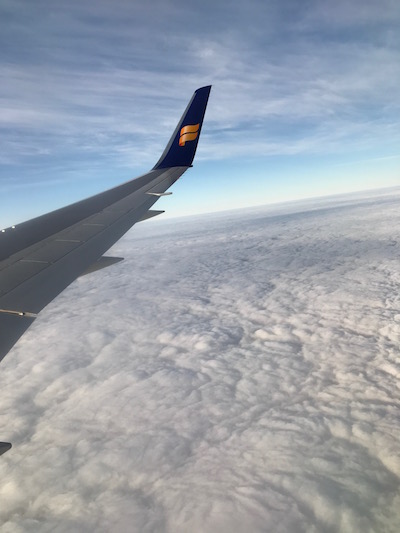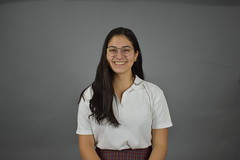Fares explores Iceland with Nat Geo
August 20, 2017
This summer, I wanted to do something different from my family’s routine vacations. Scouring the internet to find the perfect trip to do on my own led me to the National Geographic Student Expedition page where I found the perfect summer vacation: two weeks in the land of fire and ice.
Day 1: Starting off the trip, our group of 25 students, three trip leaders and Nat Geo expert Ford Cochran headed straight for the most popular destination in Iceland: the Blue Lagoon. We used mud masks on our faces and bodies to cleanse and soften the skin. The high temperature of the water was a nice break from the “summer temperatures” of 40 degrees fahrenheit. There was an amazing steam shower next to the warm lagoon. The Blue Lagoon exceeded my expectations because I did not realize how nice the heat feels in a cold climate.
Day 2 : Arriving in Reykjavik, we learned about the geology of Iceland at the local university and visited a thermal energy plant that powers all of Reykjavik and part of the Icelandic aluminum smelting industry. Also, we realized that the sun never sets during the summer. It is light outside 24/7.
Day 3: We travelled along the Golden Circle, a popular road that many tourists take to see unique destinations. Along the path, we wandered through Thingvellir National Park, saw Geysir, the namesake of all geysers, and witnessed a double rainbow at Gullfoss, a beautiful waterfall. Iceland is unique because it is situated on the Mid Atlantic ridge and on top of a hotspot, making it the only place where you can actually walk along the Mid Atlantic ridge like we did at Thingvellir National Park.
Day 4-5: We visited three more gorgeous waterfalls and one of Iceland’s black sand beaches formed by volcanic eruptions, all along the southern coast of the island.
Day 6-7: We hiked along the glacier Vatnajokull and kayaked in its glacial pool. These days highlighted the untouched beauty of Iceland and the sad reality of climate change. Our tour guide pointed out how far the glacier extended only thirty years before. All but one of Vatnajokull’s outlet glaciers (about 40) are all receding. One example is Breidamerkurjokull, which has retreated over 2 km since 1973. Most of Vatnajokull is expected to melt within two centuries, so Iceland’s fresh drinking water will be lost, causing a local crisis. We also saw a beautiful waterfall surrounded by basalt columns.
Day 8: We explored the town of Höfn. We bathed in their local hot springs. You must shower before and after because there is no chlorine in the water (They actually have people patrolling the bathrooms to make sure you shower thoroughly).
Day 9-10: We faced Europe’s most powerful waterfall, hot mud pots and an ice cave, all within Vatnajökull National Park.
Day 11: We spent three hours off roading on barely-there paths towards the center of the island, where we hiked an hour in the snow to reach a crater with two lakes created from a volcanic eruption. Known as Askja, it was located in the central mountains of Iceland. Astronauts trained at this remote crater for the moon landing because the terrain resembles that of the moon.
Day 12-13: We stayed in Akureyri, the second largest city in Iceland, where we did horseback riding and presented our On Assignment projects. Part of travelling with Nat Geo is our requirement to complete a final project in a particular field to enrich our experience with the new culture. My OA project investigated the local Icelandic people and whether their clean energy standards were by choice or chance. Based on interviews with locals about their lifestyles and opinions on green energy, I concluded that clean energy is by chance because it is easier, cheaper and more efficient for Iceland.
Days 14-15: We explored more of Reykjavik and said our final goodbyes the group. By then, I developed friendships with people from around the world, gained four new mentors and experienced one of the most beautiful, untouched places in the world.







Vickie Bartley • Aug 21, 2017 at 7:08 PM
What a wonderful trip to be able to experience so much wonder of nature.